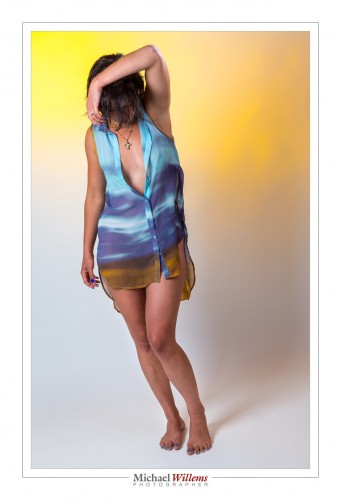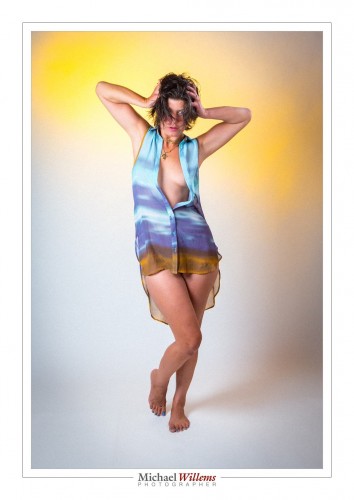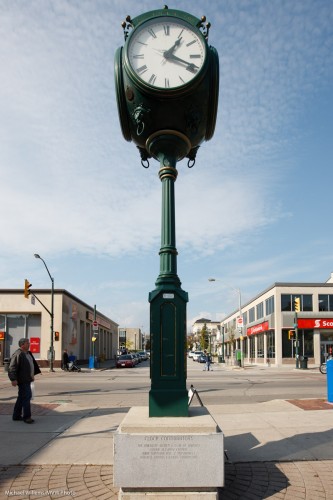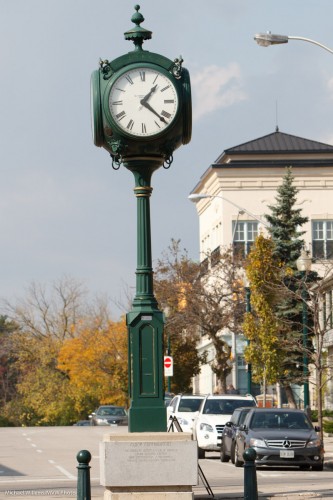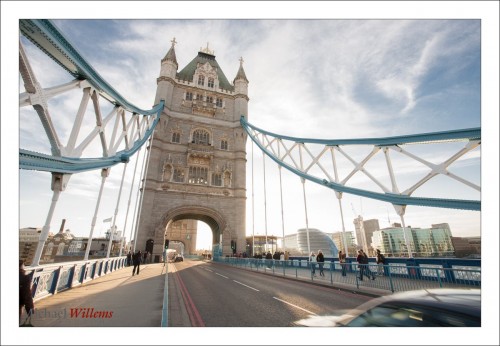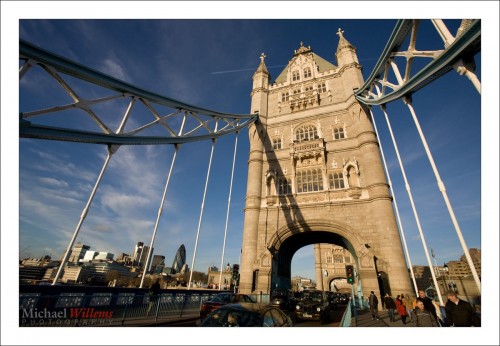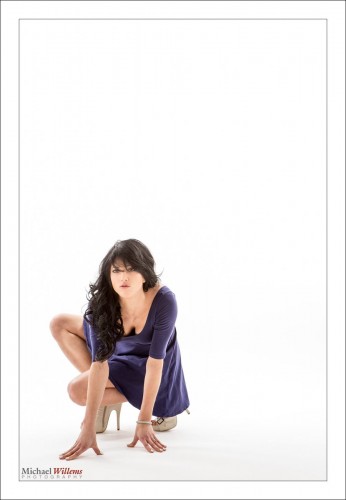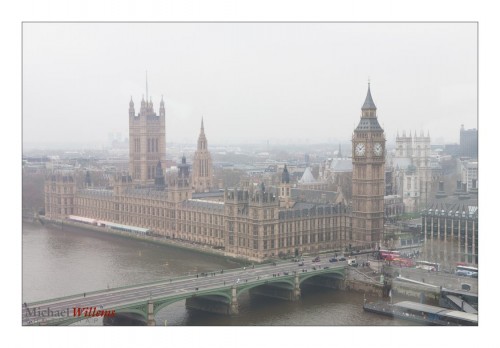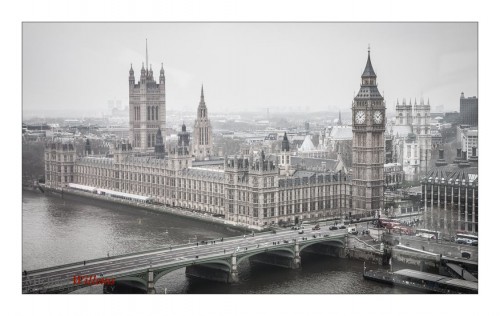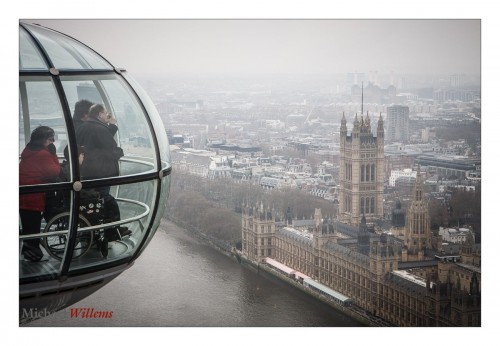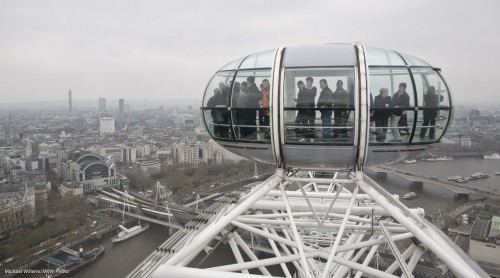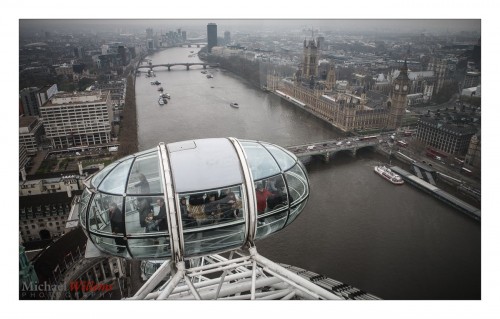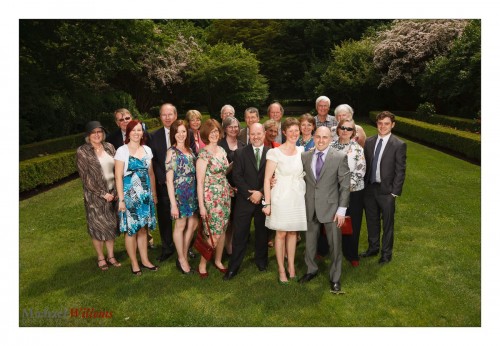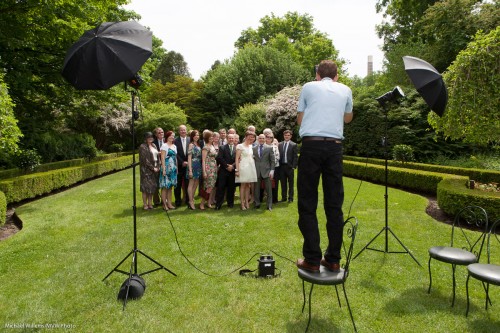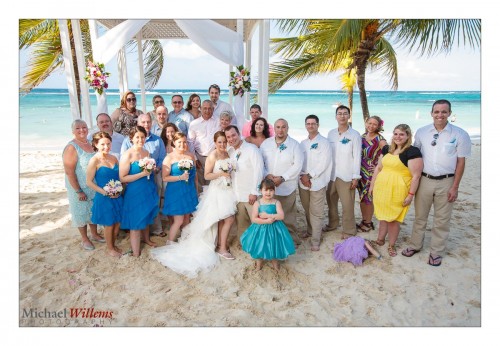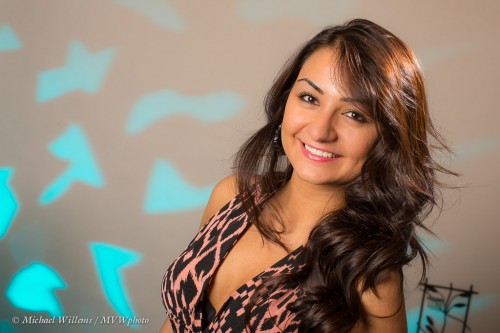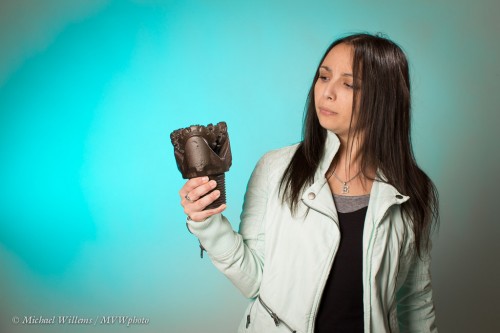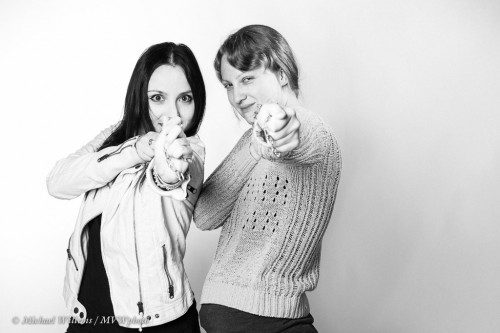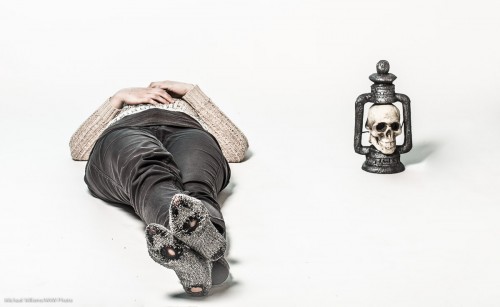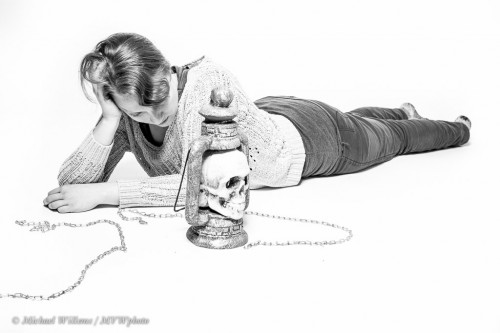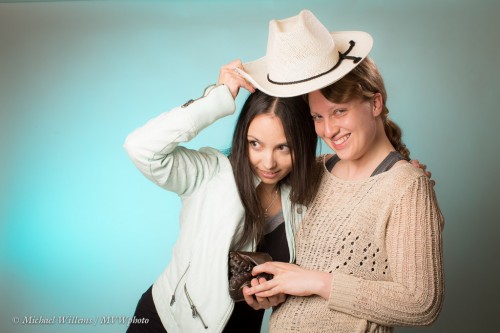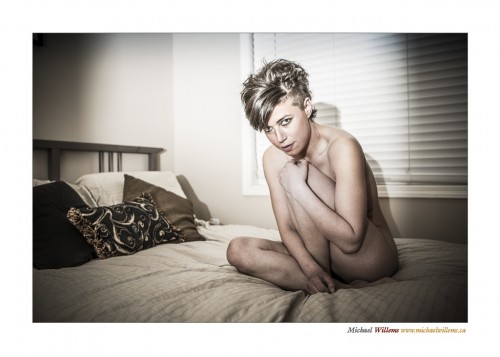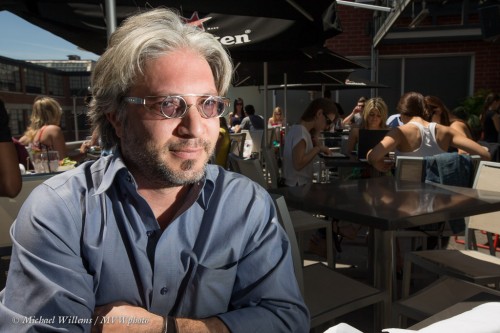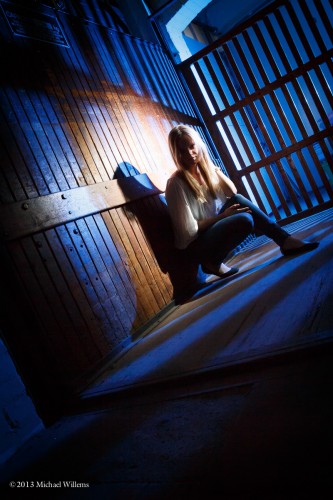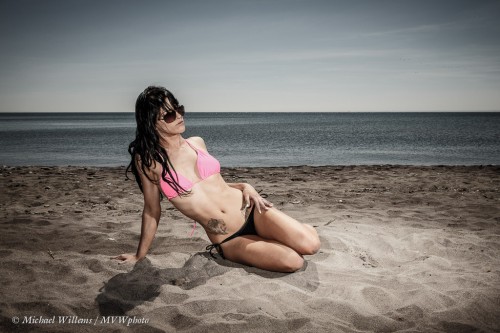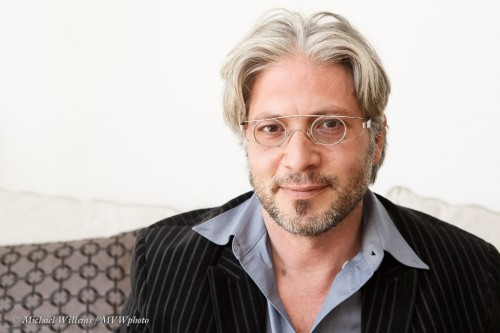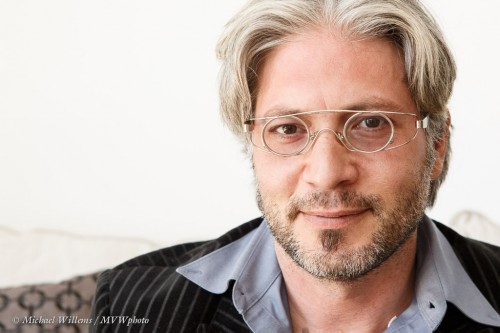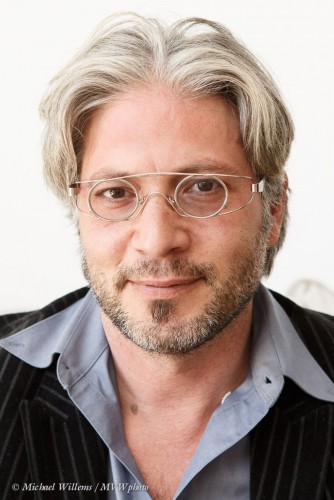This picture, from the studio shoot on Sunday night, strikes me as one where the colours worked out just perfectly:
So what works here, exactly?
- The rich yellow of the background is in separate areas rather than being homogenous. (That rich yellow is a Honl Photo “Egg Yolk Yellow” gel, by the way.)
- It matches the brown/yellow at the bottom of the shirt perfectly. It also matches the cross.
- The rich blue at the top of the shirt is in various shades and areas
- It matches the blue-ish bottom of the image, and the blue toenails, perfectly. It also matches the fingernails.
- The skintones tie it all together, as well.
To me, this image is like a poem in colour, a rhyme of form “ABab” going down, and the diagonal composition makes it also go left to right.
Here’s one more, where the yellows seem to line up with her elbows:
In both these images I had to set white balance very carefully, and I increased overall saturation and clarity a tad. Otherwise, they are the way I shot them.

